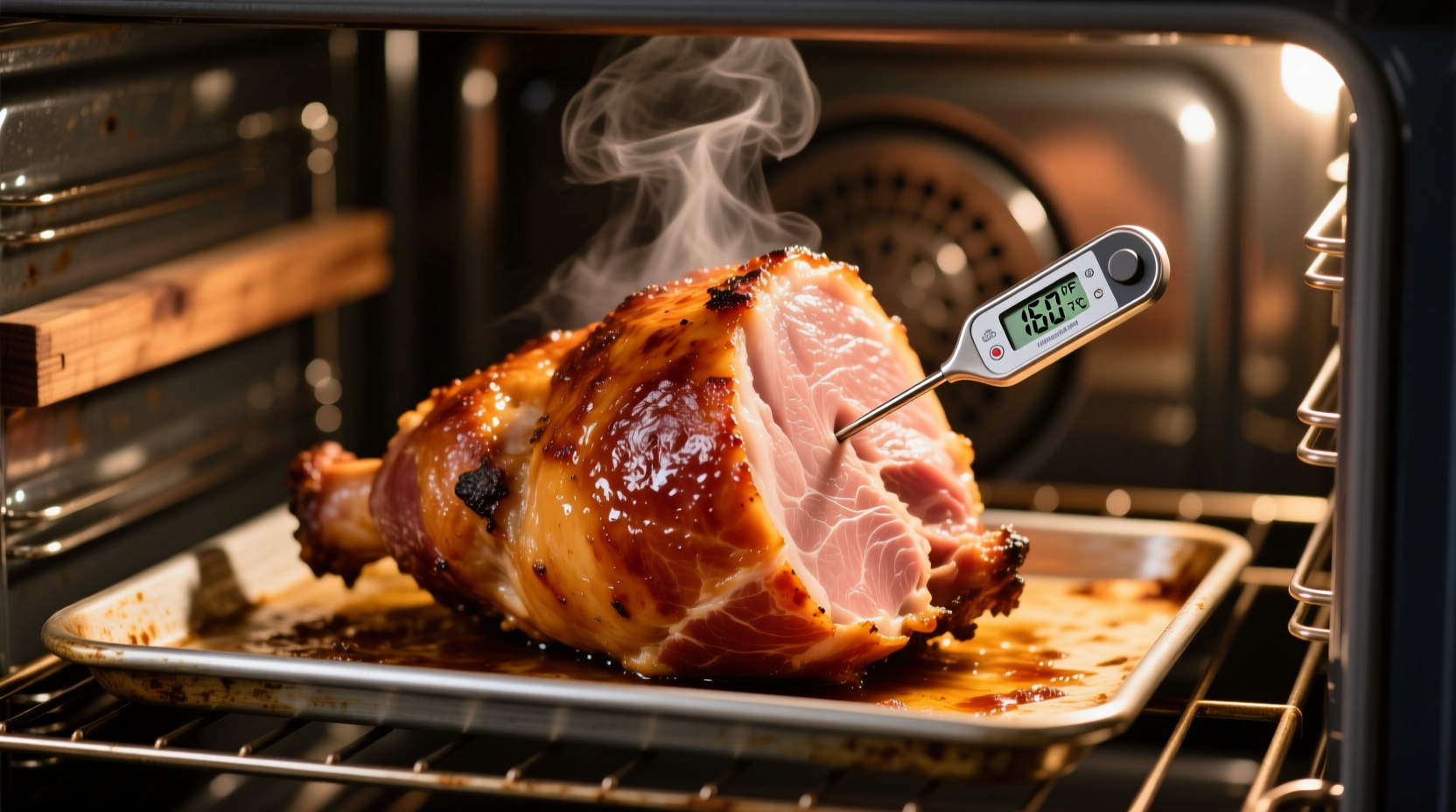Why You Still Need to Heat a Fully Cooked Ham
Despite being labeled "fully cooked," hams require reheating for optimal flavor, texture, and food safety. The USDA Food Safety and Inspection Service confirms that while these hams are safe to eat cold, heating enhances their flavor profile and ensures they reach a safe serving temperature. Most commercially available hams (including spiral-cut varieties) have been cured, smoked, or baked during processing, but proper reheating prevents potential bacterial growth that could occur during storage.

Pre-Baking Preparation Checklist
Proper preparation prevents dryness and ensures even heating:
- Thaw completely if frozen (allow 4-5 hours per pound in refrigerator)
- Bring to room temperature for 1-2 hours before baking
- Score the surface in a diamond pattern for bone-in hams
- Prepare your glaze (apply during final 20-30 minutes of baking)
- Place cut-side down for spiral-cut hams to retain moisture
Baking Process: Step-by-Step Guide
Follow these professional kitchen techniques for perfect results every time:
Oven Setup and Ham Placement
Preheat your oven to 325°F—the ideal temperature for gentle, even heating without drying. Place the ham in a roasting pan with the fat side up, adding 1-2 cups of liquid (water, broth, or apple juice) to the bottom of the pan. Cover tightly with aluminum foil to trap steam, which prevents the meat from drying out during the extended cooking time.
Timing Guidelines by Weight
| Ham Weight | Approximate Baking Time | Internal Temp Check Point |
|---|---|---|
| 5-7 lbs | 50-105 minutes | 45 minutes |
| 8-10 lbs | 80-150 minutes | 1 hour |
| 11-14 lbs | 110-210 minutes | 1 hour 20 minutes |
This timing chart aligns with recommendations from the National Pork Board, which confirms that lower temperatures with longer cooking times preserve moisture better than high-heat methods. The National Pork Board's cooking guide emphasizes that "gentle reheating is essential for maintaining the delicate texture of pre-cooked ham."
Critical Temperature Monitoring
Insert a digital meat thermometer into the thickest part of the ham, avoiding bone or fat pockets. The USDA Food Safety and Inspection Service specifies that fully cooked hams should reach 140°F internally for safe consumption. This is significantly lower than raw meat temperatures because the ham is already cooked—exceeding 140°F risks drying out the meat.
Proven Techniques to Prevent Dryness
Professional chefs use these evidence-based methods to maintain moisture:
- Baste every 30 minutes with pan juices or a mixture of pineapple juice and honey
- Apply glaze late in cooking (during final 20-30 minutes) to prevent burning
- Use a water pan in the oven to increase humidity
- Rest for 15-20 minutes before carving to redistribute juices
According to research from the University of Minnesota Extension, "covering ham during reheating reduces moisture loss by up to 25% compared to uncovered methods." Their food science department confirms that the combination of low temperature (325°F), covered cooking, and proper resting time creates optimal moisture retention.
Troubleshooting Common Baking Issues
Spiral-Cut Ham Challenges
Spiral-cut hams require special attention because the pre-sliced nature increases surface area and drying risk. Place the ham cut-side down in the pan and wrap tightly with foil. Add extra liquid to the pan (up to 2 cups) and check temperature 15-20 minutes earlier than standard timing.
When Ham Gets Too Dry
If your ham emerges drier than desired, try these professional recovery techniques:
- Slice thinner than usual to minimize dry edges
- Serve with warm pan juices or a complementary sauce
- Store leftovers with broth-soaked paper towels to restore moisture
Serving and Storage Best Practices
Allow your ham to rest for 15-20 minutes before carving—this critical step lets juices redistribute throughout the meat. When storing leftovers, the USDA recommends refrigerating within 2 hours of cooking. Wrap tightly in foil or place in airtight containers where it will keep for 3-4 days. For longer storage, freeze portions for up to 2 months.











 浙公网安备
33010002000092号
浙公网安备
33010002000092号 浙B2-20120091-4
浙B2-20120091-4